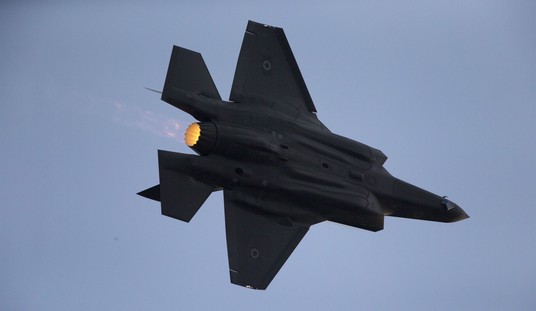In May 1945, the U-234 ended her first and only mission of the war. Assigned to deliver uranium and the most advanced Nazi weapons technology to Japan, her crew decided, upon hearing of the German surrender to turn over its secrets to the United States. Her cargo was, to put it mildly, interesting.
The cargo included technical drawings, examples of the newest electric torpedoes, one crated Me 262 jet aircraft, a Henschel Hs 293 glide bomb, and what was listed on the US Unloading Manifest as 560 kg of uranium oxide. As evidenced by Hirschfeld and Brooks in the 1997 book Hirschfeld, Wolfgang Hirschfeld reportedly watched the loading into the boat’s cylindrical mine shafts of about 50 lead cubes with 9 inches (230 mm) sides, and “U-235” painted on each.
It was from the secrets of the U-234 that the USN eventually learned that U-boats had been homing in on convoys using unintentional leakage from electronic devices. Radio silence had not, after all, been completely attained. Despite its best efforts to conceal itself the convoys crossing the Atlantic still emitted some kind of signature, telltale, or indication of their passage that the cunning foe could detect. That concept has been been developed since. The discipline of putting together ‘all the sidelobes’ of an activity and inferring facts from unintentionally transmitted information is called MASINT, or measurement and signals intelligence. MASINT is a way of fusing intelligence; it is the art of fusing technical intelligence and human espionage and from these clues deducing the location of an IED or the identity of an al-Qaeda cell. The Wikipedia article describes it thus:
Another way to describe MASINT is as “a “non-literal” discipline. It feeds on a target’s unintended emissive byproducts, or “trails” – the spectral, chemical or RF emissions an object leaves behind. These trails form distinctive signatures, which can be exploited as reliable discriminators to characterize specific events or disclose hidden targets.”
While there are specialized MASINT sensors, much of the MASINT discipline involves analysis of information from other sensors. For example, a SIGINT sensor may provide information on the specific characteristics and capabilities of a radar beam, which would be part of ELINT. That same sensor, however, may provide information about the “spillover” of the main beam (side lobes), or the interference its transmitter produces. Those incidental characteristics are part of MASINT.
Putting these concepts together is challenging; MASINT specialists themselves struggle with providing simple explanations of their field. One attempt calls it the “CSI” of the intelligence community, in imitation of the television series Crime Scene Investigation. This is useful only to the extent that it emphasizes how MASINT depends on a great many sciences to interpret data, where COMINT would deal with the meaning in an intelligible human message. Interpreting that message is not trivial, in that it would require idiomatic knowledge of the language involved, any specialized terminology being discussed, and inferences about emotional states and other subtle clues.
That’s just a way of saying that MASINT is way of inferring the truth in the way that early 20th century astronomers found new planets. A shadow across the sun, the perturbation of the known orbit of another planet, the measurement of some heretofore unknown spectrum allowed the astronomer to find a new celestial body “at the point of a pen”, that is, by inference and deducation. The art has not wholly atrophied.
Recently the Daily Mail alluded to a mysterious US IED-finding technology that America would not share with its allies. But the technology may not a secret gizmo at all so much as the result of an enormous intelligence fusion effort that would be impossible to “share” in all except the most superficial sense.
The United States was accused last night of refusing to share with Britain the latest technology it uses against roadside bombs which have killed scores of Allied troops in Afghanistan. US Army Lieutenant-General Thomas Metz, who retired last week as the chief officer specialising in counter-measures against the attacks, claims the UK and other coalition forces have been denied information which could save lives.
Lieut-Gen Metz has urged the Pentagon to share top-secret methods used by US forces to detect the so-called Improvised Explosive Devices and the terror networks which build them. … The officer said IEDs were often located using unmanned drone aircraft equipped with sensors to detect where ground has been disturbed to bury explosives. It is understood Britain does not possess this technology.
The Americans also use robotic helicopters to track the vehicles of insurgents planting bombs.
Military sources say there is no question of the US refusing to use its superior technology to help save the lives of British combat troops.
Last night, Shadow Defence Secretary Dr Liam Fox said: ‘Information is key to operational success, and in any coalition operation if we expect better burden-sharing, we must have information-sharing.’
The MoD said last night that information exchange is regularly reviewed, adding: ‘To suggest that information vital to completing specific tasks is not shared, is untrue.’
And the key to extracting information it may turn out, isn’t some whiz-bang machine but people. The New York Times describes how the flood of raw data being downloaded from drones is now overwhelming the intelligence bureaucracy’s capacity to fully exploit it.
As the military rushes to place more spy drones over Afghanistan, the remote-controlled planes are producing so much video intelligence that analysts are finding it more and more difficult to keep up. Air Force drones collected nearly three times as much video over Afghanistan and Iraq last year as in 2007 — about 24 years’ worth if watched continuously. That volume is expected to multiply in the coming years as drones are added to the fleet and as some start using multiple cameras to shoot in many directions.
A group of young analysts already watches every second of the footage live as it is streamed to Langley Air Force Base here and to other intelligence centers, and they quickly pass warnings about insurgents and roadside bombs to troops in the field.
But military officials also see much potential in using the archives of video collected by the drones for later analysis, like searching for patterns of insurgent activity over time. To date, only a small fraction of the stored video has been retrieved for such intelligence purposes.
The drones, backed by their serried ranks of human analysts, are collecting information across the spectrum and generating measurement and signals intelligence. A database is being constructed in which every electronic squeak, movement, signal leakage and signatures that we may not even know are visible is being logged, capable of being played back and any speed and joined to events elsewhere in the system. They are out there listening, as combatants once listened for each other in the Battle of the Atlantic, for the stray oscillator hearbeat, the odd word spoken into a cellphone, the ground penetrating radar signature showing disturbed earth, or the reversed track of a vehicle that was once parked beside it.
But it is the human analysts who make it all work. The ones capable of understanding regional languages, who can recognize the significance of an event, tie things back to a pattern of signatures, emissions and trails. Technology has advanced a great deal since 1945. But the dark heart of man remains largely as it was. And defense rests largely on those traditional qualities: resource, mental agility and courage. It is ironic that human beings rise to their greatest heights in order to destroy or defend each other. The U-234 was sunk off Cape Cod as a torpedo target in 1947. But the memes that were held in her secret hold have escaped to join the evils of the world.









Join the conversation as a VIP Member